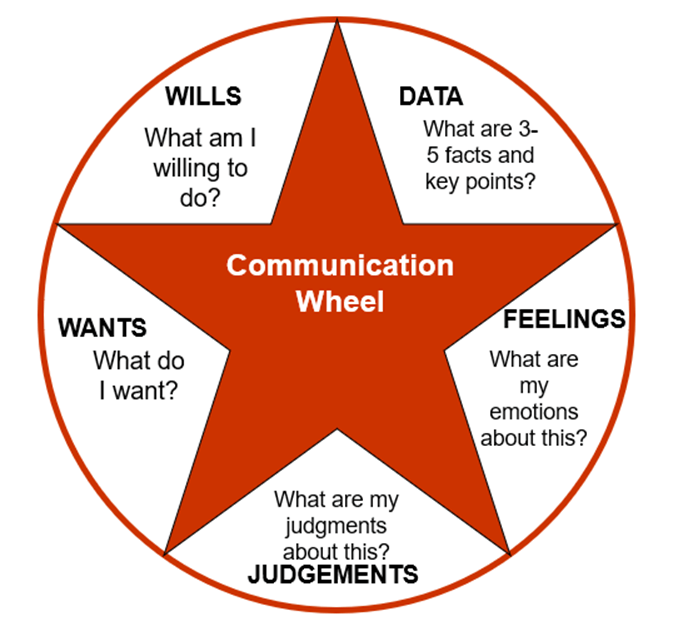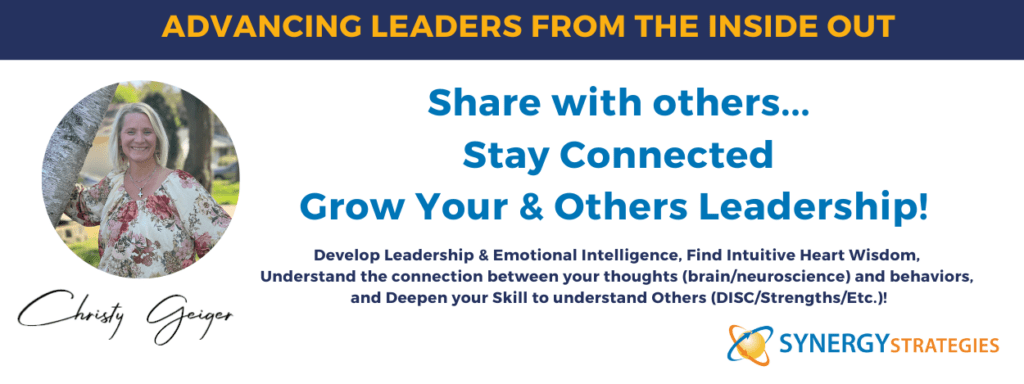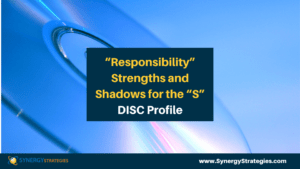Communication is challenging. We can argue, “No it isn’t, I communicate clearly, it is others who do not understand.”
That is exactly why communication is challenging. We tend to think the world thinks like us and when they don’t, we feel frustrated and often BLAME others for their lack of understanding.
Great leaders constantly assess communication gaps. They reflect on how they can communicate better as well as learn how others communicate so they can speak better in another person’s style.
Weak leaders blame and put the burden of understanding on the listener. Communication is a two-way street and an unwillingness to study and upskill your communication is a leadership pitfall.
It does take work. It does require seeking to understand how others think and operate. It is ever-changing and evolving.
There are tools and techniques to close the gap however if we are willing to submit ourselves to learn, practice, and develop our communication skills.
One tool I like is called the Communication Wheel. It is especially useful in high-stakes or conflict conversations but is useful in everyday communications.

Here are the simple five steps to upgrade your communication today:
#1 DATA. What are the 3–5 key points I wish to share? As the world increases in complexity, that might even reduce to the 1–2 key points I wish to share. Know your point. What is the bottom line? Why does it matter to the listener? What are you trying to say? Write it out so you can distill it down. Most great speeches start twice as long as the final speech. To boil it down to the key and most important message, allow yourself to free flow and then find the key point.
#2 FEELINGS. Many professionals (especially culturally trained men) pride themselves on NOT having FEELINGS but rather thoughtfully handling situations and information with their brains/minds. While professionals and men have been applauded for their non-emotional handling of work in the past, it does not mean this is healthy or that they are devoid of feelings. We are human beings. Our brains operate with an emotional center. We do have feelings and emotions about things, whether we acknowledge them or not. The lack of this recognition is what has caused emotional intelligence (EI) to be more valued in the workplace today than academic intelligence. You can have a genius leader with weak EI, and they will be a liability for your organization. The ability to reflect and assess your emotions is critical to your awareness and handling of a situation. Leaders who believe they do not have emotions as part of their operating system are fooling themselves and blindly operating with emotional bombs that they are oblivious to. The rest of the team is not, however, so it is always in the leader’s best interest to assess and reflect on their emotions and feelings about this topic, challenge, information, etc. (i.e… I feel irritated that I need to share this; I feel they should know it already. I feel angry that we must spend time on this topic…we have covered it already. I feel impatient that people do not have this information and feel frustrated we are making mistakes. I feel stressed because our numbers are low and people do not have more urgency. I feel confused about why people do not understand their job when we have communicated clearly. I feel silly doing this exercise. Etc.)
#3 JUDGMENTS. What are my judgments about this? Be aware of your emotions so you can size up your assumptions and judgments, etc. Emotions communicate between words and can create emotional stink bombs, triggers, and hijacks for people when you are delivering a message. A lack of awareness of the judgments you hold creates blind spots to what you might be projecting or implying in a toxic way. When this happens our messages are “loaded” and suddenly what we thought was a simple session goes wrong and people respond differently than we thought they should. When we take time to understand our feelings, we can be intentional about working through how we might accidentally make unfair assumptions or SCARF someone. Look at other blog articles to learn about scarfing people.
#4 WANT. What do I want? Consider what I want from the conversation. I love the book Never Split the Difference by Chris Voss, the USA #1 hostage negotiator. For a negotiator to get what they want; they have to take the steps above AND know what they want. It is important to be clear on what you need and want so that you can find a win-win. Looking at what is compromisable and what is not is also important. Often when we have not taken steps 2 and 3, we get emotionally caught up in winning the battle and finding the
win-win becomes challenging. Our egos get activated and we get attached to being right, feeling offended, challenged, or disrespected. We lean in to fight for what we want but really, we want it all. When we can assess what we really want from this and what we are willing to give, we can find healthy and happy win-win solutions.
#5 WILLS. What am I willing to do? Judith Glasser, author of Conversational Intelligence, talks about the “push-pull” of a conversation. Sometimes in leadership we push a lot of information by telling, demanding, or dictating (which we like to think is requesting or asking but can come across as telling and directing). To have a push-pull to a conversation we need to reflect on what we are willing to do versus what we are asking or requesting. It is a little like one of the key questions Simon Sinek says every great boss asks, “HOW CAN I HELP?” When we are bringing information to the table and have a request, need, or purpose, we must reflect on what we are wanting or asking for (step 4) but also what we are willing to do. I love the term we use often in coaching, CO-DESIGN. We want to together design, co-design, our agreements, understanding and next action. What you will do, what I will do. This is a game plan and allows for clear communication because it takes the information and then designs the action that follows the information. Commonly, we spend so much effort on the touch conversation, that leaders are relieved when it is over, they forget or assume the message is sent and the action does not need to be designed or discussed. Working through what we are willing to do with the agreement of what they are willing to do allows a review of the conversation, confirms understanding and essentially designs what success looks like (the result and future activity). Most conversations are not simply informational, they have a purpose. Understanding the action we are willing to take is the first step in creating a plan and path for a positive and clear result after this communication is done.
Communication is challenging, even for skilled, masterful, and talented communicators. Taking time to work through these five steps will improve your communication and the results from that communication!






